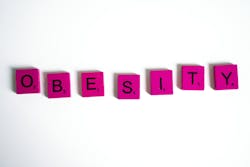Recently, researchers at Children’s Hospital Los Angeles took a novel approach to examine the connection more clearly between higher body mass index—as well as low socioeconomic status—and the rise in the risk for pediatric kidney stones.
Urologists and nephrologists have long suspected that obesity increases the risk for kidney stones in children. This link is well-established in adults but demonstrating it in children has been more challenging.
The team—led by S. Scott Sparks, MD, and Arthi Hannallah, MD—reviewed 221 children with kidney stones at Children’s Hospital Los Angeles, from 2007 to 2021.
But instead of looking at pediatric patients as a whole, they grouped them by pubertal status—before puberty, during puberty, and after puberty—and compared their body mass indexes to similarly aged youth without kidney stones.
The findings were clear: Healthy children with kidney stones who had reached or completed puberty were more likely to have a significantly higher body mass index (BMI) than similarly aged children who didn’t have kidney stones.
Sparks, who co-directs the Comprehensive Stone Program at Children’s Hospital Los Angeles with nephrologist Nadine Khouzam, MD, presented the results at the Society for Pediatric Urology Fall Congress.
“These elevated BMIs are very similar to what we see in the adult population,” Khouzam says. “By factoring in pubertal status, we were able to demonstrate a connection that doctors have long suspected.”
Puberty versus pre-puberty
The idea for the study’s design came from Hannallah, MD, a second-year pediatric urology fellow at Children’s Hospital Los Angeles.
“Part of the challenge in studying kidney stones has been that children are so diverse in terms of age and developmental stage,” Hannallah says. “We hypothesized that we would find elevated BMIs in stone patients beginning with the onset of puberty, and we did.”
In contrast, the study found that children with kidney stones who had not yet reached puberty did not have significantly higher BMIs than the control group.
Why? “It’s possible that stones in younger patients are more often caused by other medical conditions, such as spina bifida,” Sparks says. “That’s not true across the board, but it may be a factor.”
The study looked only at otherwise healthy children with stones, not those with stones caused by specific conditions.
The impact of socioeconomic status
Sparks also presented a second paper from the team, which found that children with kidney stones were more likely to be from households with low socioeconomic status.
Even more concerning, patients from families living at or near the poverty level were much more likely to need surgical intervention for their stones.
Even the types of stones differed with socioeconomic status. More affluent children tended to have calcium oxalate stones, while less affluent children had struvite stones, which are more typically related to diet.
The group is now investigating the impacts of living in a “food desert”—with a lack of proximity to healthy foods—on kidney stone risk in children.
“All of these studies go hand in hand,” Sparks says. “We can see that obesity is a risk factor for stones in children. And we know that lower socioeconomic status is associated with higher rates of obesity and obesity-related illnesses. Stone disease is likely one of those obesity-related conditions for older children and adolescents, just like it is for adults.”

